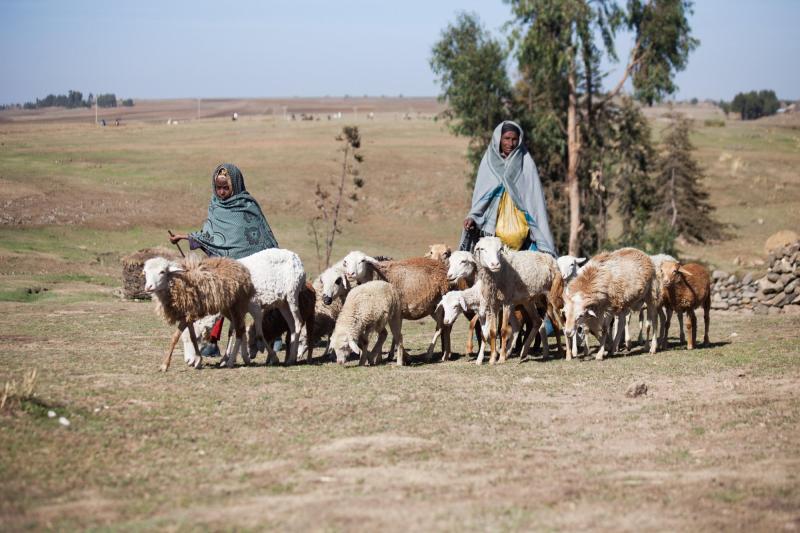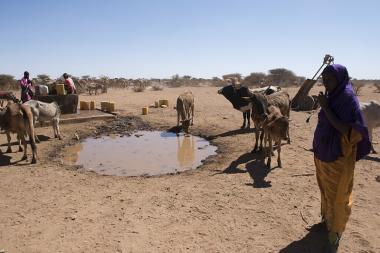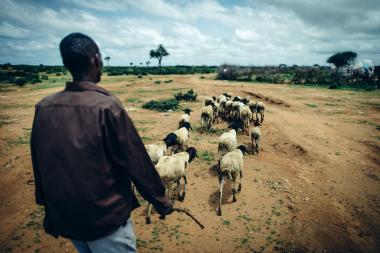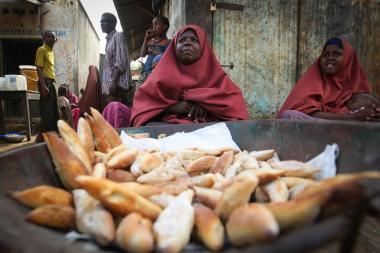Blog
We need a new narrative for climate change in the drylands
SPARC’s Director reflects on what is most needed to support climate resilience in the drylands of Africa and the Middle East.
Many delegates at COP28 in Dubai will have in their minds a conventional story about the drylands of the Sahel and the Greater Horn of Africa. In this story, climate change will worsen political instability and conflict. The people, generally poor and with few opportunities outside of marginal livelihoods such as pastoralism, won’t be able to cope with climate change. Many will be forced to migrate elsewhere. In this story, there is little the international system, aid, and climate finance can do to help these people avoid a vicious cycle of poverty, climate vulnerability, conflict, and crisis. The lack of reliable and legitimate institutions, security, and other practical obstacles mean they are – and likely will always remain – out of reach. In this story, the main problem is that these places aren’t more like Switzerland. The best one can hope for is to provide slightly more effective sticking plasters through humanitarian assistance.
It is a tidy story. Compelling and convenient. It builds on decades, even centuries, of what everyone knows about drylands and pastoralists.
It is also wrong.
There are at least three big steps negotiators can take in Dubai to change the way international actors think about and support action in these places. This will be difficult because these steps challenge conventional wisdom about what works in international assistance and climate adaptation. That is because they are based in the realities of dryland systems - and much of what people know about dryland systems is wrong.
1. We must see conflict as a driver of climate vulnerability – and not the other way round.
The idea that climate change necessarily causes or multiplies conflict risks must be cast aside. It does not serve those who live in fragile and conflict-affected settings. Nor does it serve those who want to think, talk, and act seriously about reducing climate vulnerability. The more significant causal relationship runs in the opposite direction: conflict creates or exacerbates climate vulnerability. In Somalia, Niger, and Yemen, for example, political instability and violence have led to shortfalls in public services, market penetration, access to technology and capital. And these shortfalls limit people’s abilities to anticipate, absorb and adapt to shocks. In these situations, a natural hazard – such as a heatwave – can quickly trigger disasters, exacerbate protracted crises, and precipitate complex emergencies.
Understanding this relationship between conflict and climate change is important. It shows us that building climate resilience in fragile and conflict-affected areas requires tackling the drivers of climate vulnerability, including instability, poverty and conflict – addressing the cause of the problem, not the symptoms. For drylands people to have more options for managing risks and embracing opportunities, they need an enabling environment in which systems and institutions support peace, stability and resilience but can work through conflict, instability, and disaster. That requires effective collaboration between a wide range of actors across humanitarian aid, development, peacebuilding, disaster risk management, and climate change mitigation and adaptation. This is beyond the mandate of any one organisation or intervention. A positive sign at COP28 would be a larger discussion about how to scale up not just finance, but also more coordinated, risk-informed climate action in conflict-affected countries – something which the Presidency-led thematic day on Relief, Recovery and Peace may help deliver.
2. Negotiators need to address the conflict blind spot in adaptation finance.
In some of the poorest and most climate-vulnerable countries, conflict creates a double blow: it not only creates exposures and vulnerabilities to climate change, it also throws up additional barriers to accessing climate finance. Weak government capacity and overly demanding bureaucratic requirements from donors mean that climate finance to these most in-need areas is barely a trickle. In 2019-20, Somalia received less than 1% of the climate finance which the Government estimates it needs to adapt to climate change; and across the West Africa Economic Monetary Union, countries receive only USD 3.5 billion per year – far less than the USD 7.9 billion they require.
Negotiators need to take seriously the unmet challenge of unlocking adaptation finance for the poorest countries. On the one hand that means developing fit-for-purpose funds that can serve fragile and conflict-affected settings: ones whose accreditation and application processes are flexible and sensitive to the limitations of fragile governments, and which can accept a higher level of risk. On the other hand, it means working with governments to strengthen their capacity to apply for and channel climate finance. SPARC’s work in Somalia has demonstrated how such approaches, with a willingness to learn by both governments and donors, can unlock progress in delivering effective support.
3. We need to develop alternatives to adaptation planning and financing at the national scale.
In many dryland systems, people cope with climate shocks by working across boundaries. Moving herds and households across national borders is a natural, sustainable, and practical response to localised drought. Yet piecemeal approaches to adaptation planning on a district-by-district or even nation-by-nation basis are creating barriers and removing traditional corridors. This undermines traditional livelihoods that were designed with resilience in mind long before these polities and borders existed. Worse, there is a tendency to view cross-border mobility in terms of political and security agendas which further marginalise pastoralists pursuing their legitimate livelihoods. Regional approaches to adaptation planning and financing are needed, which recognise the benefits to both pastoralists’ livelihoods and the food security and economies of neighbouring countries.
There are some examples of cross-border initiatives, and a clear appetite among African policymakers to tackle transboundary climate risks, yet more needs to be done. In 2023, SPARC’s own research has been informing greater regional cooperation to manage transboundary climate risks, by identifying policy and financial mechanisms which regional bodies can use to manage risks, and working with representatives from regional economic communities and the African Union to drive greater collaboration. It is particularly gratifying to see that transboundary climate risks were included in the decision text of the nineteenth ordinary session of the African Ministerial Conference on the Environment (AMCEN) in 2023. Let’s hope that similar consideration is given to mapping and managing cross-border climate risks in the framework for the Global Goal on Adaptation, which is being negotiated at COP.
The overwhelming message from SPARC research is this: that the drylands of the Sahel and Horn of Africa are dynamic, robust systems in which innovative people regularly cope with climate shocks and political instability despite challenges imposed on them by others. The challenge for climate negotiators is to learn from their example, and to rise to meet it.

A farmer in Menz, Ethiopia, gets help from her 10 year old daughter in keeping her sheep
Credit Image by Zerihun Sewunet/ILRI


